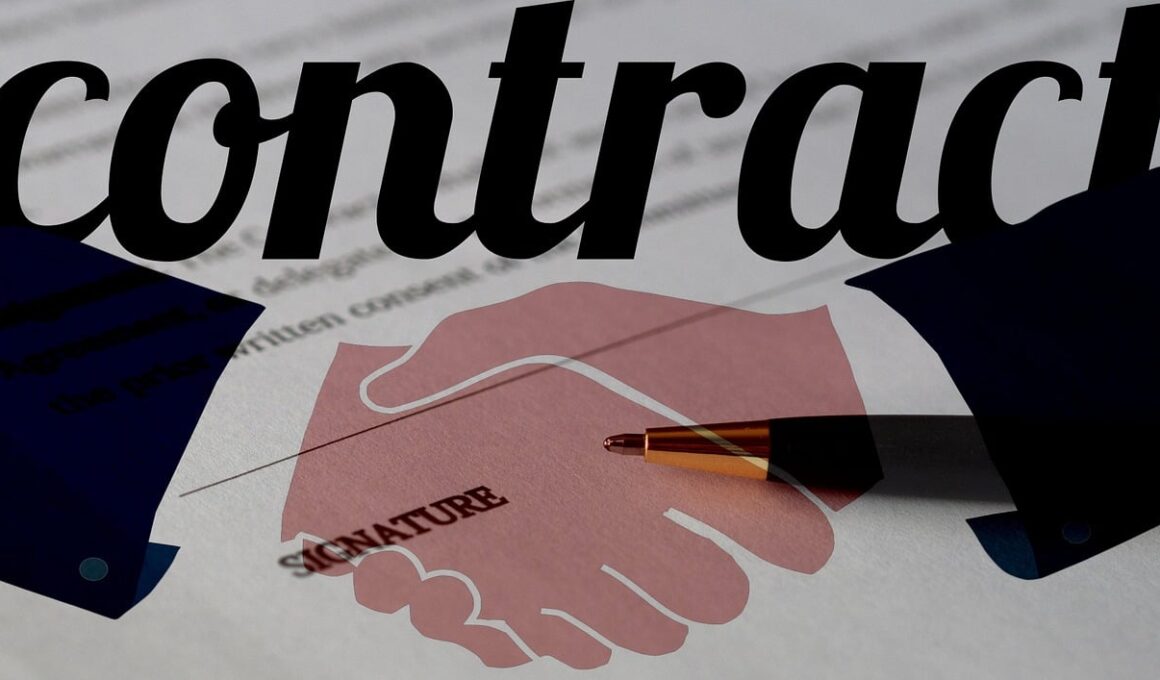The Relationship Between Liability Insurance and Regulatory Compliance
Liability insurance is a fundamental aspect of business risk management, serving as a critical safeguard against legal claims. Companies across various sectors are subject to numerous regulations, which can impact their operational frameworks. Understanding how liability insurance relates to regulatory compliance is essential for any business. Firstly, liability insurance helps businesses adhere to legal requirements set forth by regulatory bodies. Companies operating in regulated industries often face strict compliance standards, which may include mandatory insurance coverage. Without appropriate liability insurance, businesses expose themselves to significant financial risks that can arise from lawsuits. Secondly, insurance providers often conduct compliance assessments to mitigate risks and ensure that businesses have satisfactory coverage. Regular auditing by insurers helps identify gaps in compliance that could result in legal repercussions. Furthermore, any changes in regulations may require businesses to adjust their insurance coverage accordingly. This dynamic relationship between liability insurance and regulatory compliance emphasizes the importance of proactive risk management strategies, thus shielding companies from potential legal and financial pitfalls that can stem from non-compliance with industry standards. Ultimately, a robust liability insurance policy aligns closely with a company’s regulatory obligations.
In addition to legal protection, liability insurance can enhance a company’s reputation and credibility. When consumers and clients see that a business is adequately insured, it often engenders trust and confidence in their services or products. This perception becomes increasingly vital in competitive industries where trust is a decisive factor. Companies that prioritize liability insurance demonstrate a commitment to ethical standards and professionalism. Moreover, effective communication regarding insurance coverage can be part of broader marketing strategies. Customers are more inclined to engage with businesses that present themselves as responsible and accountable. Liability coverage can also be a requirement for entering contracts with third-party vendors or clients, particularly in sectors where risks are inherent. For instance, construction firms are frequently obligated to show proof of liability insurance before commencing projects, a requirement that additionally reflects their commitment to safety and compliance. This leads many companies to integrate insurance discussions into their business operations. Consequently, maintaining adequate liability insurance aligns with broader business goals, ultimately fostering stronger client relationships and promoting a positive business image that aids in overall growth and success.
The Financial Impact on Businesses
From a financial perspective, liability insurance plays a significant role in ensuring businesses remain solvent in times of crisis. When a claim arises, the financial burdens can be overwhelming, potentially leading to insolvency without proper coverage. Liabilities can include legal fees, settlements, and damages associated with lawsuits, which can drain resources quickly. By investing in liability insurance, businesses mitigate these financial risks, allowing them to allocate resources to critical growth areas. Protection from major business interruptions is also vital for long-term sustainability. Companies equipped with liability coverage can recover swiftly to meet clients’ needs and maintain operational continuity. Furthermore, actively managing liability insurance provides essential insights into risk exposure, allowing businesses to make informed decisions about policies and their financial strategies. Insurers also offer risk management support, training, and resources that help firms minimize potential liabilities. As businesses evaluate their insurance needs, understanding the interplay between financial prudence and regulatory compliance becomes crucial. Emergency funds can be preserved, enabling more strategic reinvestments into the business. In conclusion, liability insurance is an investment that safeguards against unpredictable financial burdens.
Compliance with regulatory standards doesn’t solely rest on having insurance; it also requires businesses to understand their liabilities thoroughly. Companies must regularly review their policies to match the evolving regulatory environment and business landscape. For instance, industries such as healthcare and manufacturing face stringent regulatory guidelines concerning safety and performance. Here, liability insurance coverage may need frequent updates to reflect these guidelines. Businesses need to collaborate closely with their insurance providers to ensure full compliance. Training and education for employees about compliance-related issues also play a significant role in maintaining regulations. Staff should be aware of potential risks associated with their roles and how liability insurance can mitigate these risks. Additionally, companies often conduct internal audits to ensure all aspects of operations align with the standards set by external regulators. Insurance representatives can offer insights and resources that help in identifying any discrepancies in compliance. Creating a culture that prioritizes compliance can significantly reduce the likelihood of disputes, ultimately reinforcing the relationship that liability insurance has with regulatory obligations. Thus, ongoing engagement between businesses and their insurers is pivotal to achieving comprehensive compliance and risk management.
The Role of Insurers in Compliance Assurance
Insurance companies play a crucial role in fostering compliance by offering tailored policies that address specific regulatory needs. Insurers are often well-versed in the regulations affecting various industries and can provide guidance on appropriate coverage limits and endorsements. Businesses benefit significantly from this expertise, as insurers can highlight necessary protections that an organization might overlook. Additionally, insurers may offer risk assessments that detail organizational vulnerabilities, enabling businesses to take proactive measures in addressing compliance issues. This collaboration extends beyond just policy issuance; it involves ongoing advisory support to ensure that companies navigate the changing regulatory landscape effectively. Some insurers offer seminars, training sessions, or webinars to educate businesses about compliance obligations and risk management strategies. Understanding the significance of these services can lead businesses toward not only purchasing insurance but also fully engaging in compliance culture. As a result, companies can reduce claims frequency and severity while improving overall compliance efforts. This synergy between insurers and businesses fosters mutual benefits, promoting a culture of accountability and responsibility that enhances organizational resilience.
Furthermore, digital tools in the insurance sector have revolutionized how businesses manage liability and compliance. Many insurers now offer online platforms where businesses can easily access policy details, coverage options, and compliance resources. These tools enhance transparency between insurers and businesses, allowing for swift adjustments to meet regulatory changes. The ability to manage policies electronically streamlines the process of ensuring compliance and makes it easier to update coverages as regulations evolve. Furthermore, data analytics can help identify trends related to claims and risks, informing businesses about their compliance standing. This data can serve as a valuable asset for companies, enabling them to refine their risk management strategies further. Engaging with these digital solutions can lead to sustained improvement in compliance outcomes. Additionally, insurers can employ artificial intelligence to assess claims and evaluate potential liabilities in real-time. Companies that embrace these technological advancements in their insurance strategy can strengthen their overall approach to compliance. Ultimately, leveraging these digital resources not only simplifies the management of liability insurance but also promotes a proactive stance on regulatory compliance for all parties involved.
Conclusion
In summary, the relationship between liability insurance and regulatory compliance serves as a cornerstone for effective risk management in businesses. As organizations navigate their operational landscapes, understanding the interconnected nature of legal obligations and insurance coverage becomes vital. Liability insurance is not just a safety net; it reflects a commitment to ethical business practices and regulatory adherence. Companies that prioritize compliance and actively engage with their insurers are better equipped to mitigate risks while fostering trust among clients and consumers. Moreover, the rapid evolution of regulations necessitates an adaptive approach to insurance management. Businesses can greatly benefit from taking a holistic view of liability insurance that includes ongoing assessments, employee education, and leveraging digital resources. This proactive engagement creates a continuously improving culture of compliance and resilience. As such, organizations position themselves advantageously to thrive in an increasingly complex regulatory environment. In the end, the ultimate goal remains clear: to safeguard not only the organization’s financial health but also its reputation and operational efficiency as critical components of long-term success.
To summarize, navigating the complexities of liability insurance in light of regulatory compliance is essential for modern businesses across industries. By understanding how to balance legal obligations and risk management, companies can establish a solid foundation for sustainability. Liability insurance, when properly implemented, strengthens a company’s operational framework and enhances its strategic advantages.


